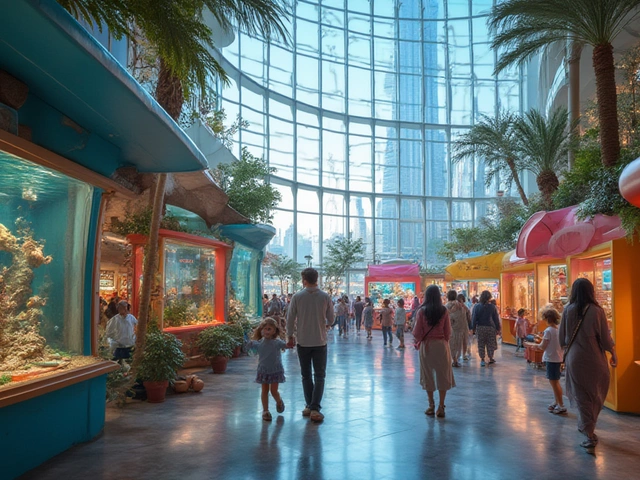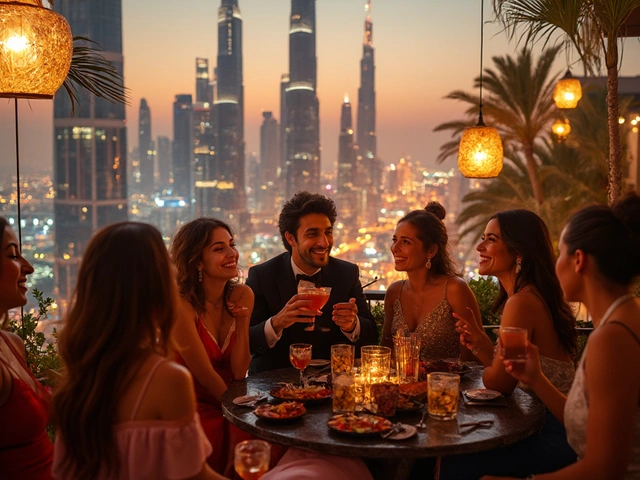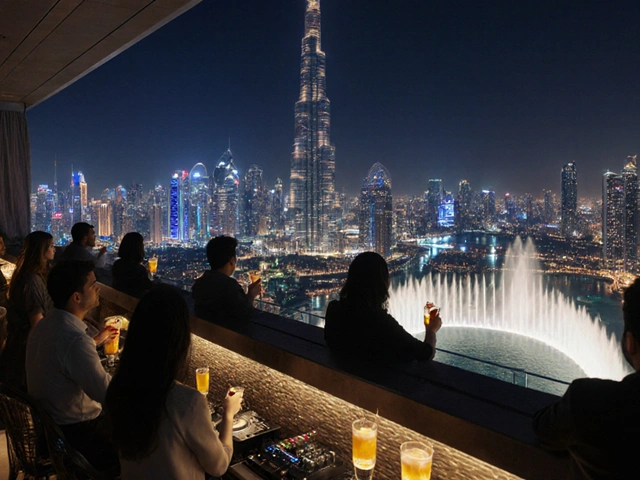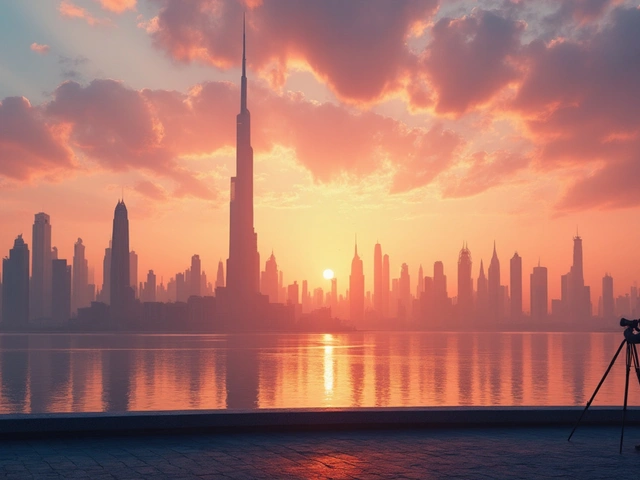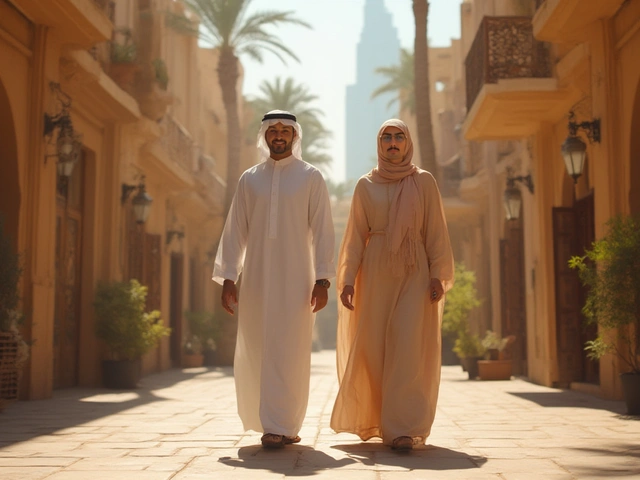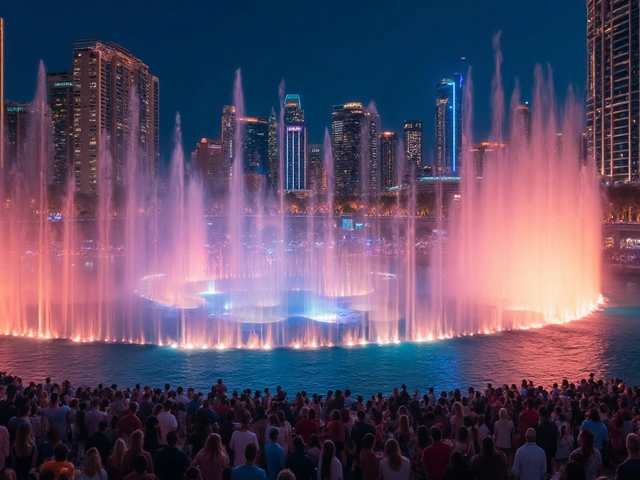Marble floors echoing with the sound of footsteps, the glimmer of gold leaf on ceilings, and the unmistakable silhouette rising from the Arabian Gulf—it’s hard to ignore the way the Burj Al Arab instantly signals ‘you’re in Dubai.’ If you’ve ever driven down Jumeirah Road or found yourself on Kite Beach at sunset, you’ve seen its sail shape glow against the fading sky. This isn’t just another hotel; it’s a roaring celebration of Dubai’s hunger for the extraordinary, seamlessly blending futuristic dreams with Emirati roots.
The Story Behind a Modern Icon
Back in the 1990s, Dubai’s shoreline looked nothing like today. Jumeirah Beach was home to small fishing communities and a handful of upmarket resorts, but few people could have imagined that developers would one day claim 280 meters of the Gulf for an artificial island, just to build one hotel. Yet, when plans for Burj Al Arab first emerged, they were already out to make a statement: Dubai was more than desert and old markets—it was set on becoming the world’s playground. British architect Tom Wright designed the Burj as a modern dhow sail, rooting the structure directly in the maritime history of the UAE. But it’s not just about looks. The building took five years to finish, employing more than 2,500 laborers and 250 designers from around the globe. Just the lobby soars 180 meters high—taller than most hotels in the UAE, let alone a single atrium. It’s extravagance, sure, but it’s extravagance designed to tell the world a story about what Dubai aims for—the bravest, the boldest, and the best.
Opening in December 1999, Burj Al Arab instantly became a symbol for the city’s leap into the future, much like the Palm Jumeirah or Dubai Mall did later. Residents sat in traffic along Jumeirah Beach Road, craning their necks to get a glance of the giant structure. Tourists would beg cab drivers to stop for a photo. Yet, when you step inside today, you notice how the entire space is a conversation between Emirati aesthetics and global design. Look up: The colors of the interior—royal blue, red, and gold—mirror the UAE’s cultural palette. The mashrabiya screens, the use of water and light play, and even statues of falcons and horses—each detail is rooted in something local. You don’t just see a hotel; you see Dubai’s story, designed for the eyes of the world.
Luxury Defined: Inside the Burj Al Arab
Let’s talk luxury. In Dubai’s hospitality market, the competition’s fierce: Atlantis The Palm, Address Sky View, and the Mandarin Oriental are all household names. But Burj Al Arab set a standard everyone else strives for. The term ‘seven-star hotel’ isn’t official—there’s no ratings agency that awards it—but people who’ve visited often say nothing else comes close. Clock the numbers: every suite is a duplex, with floor-to-ceiling views of the Gulf; 1,790 square meters of 24-carat gold leaf decorate the interiors; and you get a pillow menu with 17 choices. That’s not a typo—seventeen. There’s a dedicated team of nearly 80 butlers and staff just for arrivals, and the signature Rolls-Royce fleet waits to whisk you to and from Dubai International Airport in style.
Restaurants are a destination in themselves. Al Mahara, for example, sits behind a floor-to-ceiling aquarium with up-close views of exotic reef life as you eat. Al Muntaha, perched 200 meters above sea level, serves up modern European cuisine with jaw-dropping skyline views, while Sahn Eddar is the place to try that famous gold-dusted cappuccino for afternoon tea. If you want to taste Emirati flavors, the hotel’s special dinners often highlight traditional dishes: think lamb harees, chicken majboos, and sticky, cardamom-spiced luqaimat—with a modern twist, of course.
What really sets Burj Al Arab apart for Dubai residents? The curated experiences. You don’t actually have to book a room to dip your toe in the water. Many locals celebrate special occasions with a meal at one of the restaurants or indulge in a spa treatment at Talise Spa, which offers everything from Arabian-inspired rituals to state-of-the-art facials—couples often splurge on the panoramic pool suite overlooking the Gulf. For special events, like UAE National Day or New Year’s Eve, the hotel hosts exclusive fireworks and private parties—word spreads on Instagram long before the invites drop, with tables selling out weeks in advance. It’s become a go-to for proposals and celebrations not just for expats, but Emiratis who want to honor Dubai’s sense of homegrown pride in unmistakable style.
| Fact | Detail |
|---|---|
| Height | 321 meters (1,053 ft) |
| Suites | 202 duplex suites |
| Gold Used | 1,790 sqm of 24-carat gold leaf |
| Butler-to-Room Ratio | 8:1 |
| Artificial Island Size | 280 meters from Jumeirah Beach |
| Luxury Cars | Fleet includes Rolls-Royce and BMW |
Emirati Traditions in a Global Icon
Beneath all the shine and luxury, there’s something comforting and familiar when you’re at Burj Al Arab—the warmth of Emirati hospitality. Whether you’re an old-time Dubai resident or you just stepped out into the heat from Terminal 3, the first thing you notice is everyone is greeted with a traditional Arabic coffee (gahwa) and dates in the soaring lobby. It’s a small detail, but for locals, this is what sets real Dubai hospitality apart. The staff move between English, Arabic, Russian, even Mandarin. Yet, the core values—generosity, respect, and discretion—reflect what residents have always known is at the heart of the city.
Dive deeper, and you see Emirati influences in every corner. The carpets in public spaces feature designs inspired by sand dunes and palm leaves found in the UAE landscape. The gold, aside from being just lavish, references the country’s wealth as a historical trading hub. Ceiling motifs in private suites nod to Islamic geometric art, while fragrances blend oud and rosewater—a direct call to scents you’ll find wandering around Deira’s souks or walking down the Dubai Creek in winter.
These subtle decisions weren’t a random afterthought. When international luxury travelers pushed for cutting-edge minimalism, Burj Al Arab doubled down on warmth and personality rooted in tradition. The hotel runs cultural sessions for staff, so everyone who greets a guest understands the history behind each gesture—from the pouring of coffee to the choice of music in the corridors. During Ramadan, the hotel embraces local customs, hosting lavish iftar and suhoor events that draw guests from across Dubai. The majlis set up in the lobby during Eid or key UAE events feels like a home away from home, whether you hail from Sharjah or you moved here from Mumbai.
Burj Al Arab and Dubai’s Ever-Changing Skyline
Dubai’s skyline just doesn’t stop. Today it’s Burj Al Arab, tomorrow Dubai Creek Tower, and who knows what’s next? Yet, as the years pass and the skyline keeps adding more glass and steel, Burj Al Arab still stands out. You see it from JBR, from Palm Jumeirah, or cruising on Sheikh Zayed Road. For Dubai residents, there’s pride here. This is the building many watched rise from the waves long before Dubai Opera was hosting Broadway shows or Museum of the Future started pulling in art-lovers from every continent.
Yet, Burj Al Arab’s location offers more than just a good selfie spot. If you’re looking for a beach day, Wild Wadi Waterpark is next door—a tried-and-true favorite for families. Madinat Jumeirah, with its maze-like souks and candlelit abra rides, sits just a stroll away, making the area a magnet for Friday gatherings and after-work dinners. Want to impress clients? Afternoon tea or a sunset cocktail at Skyview Bar is still a top pick for business meetings, thanks to that unbeatable view stretching from Downtown to the Burj Khalifa. For fitness fans, the running and cycling tracks at Jumeirah Beach offer plenty of action. And a quick tip—if you time your visit during the Dubai Shopping Festival, many of these attractions throw in special discounts for residents. It’s these extras that make the area around Burj Al Arab more than just luxury: it’s part of daily Dubai living.
Don’t forget the events. Burj Al Arab is no stranger to making headlines—from tennis legends like Roger Federer and Andre Agassi playing match on its helipad to hosting New Year’s Eve fireworks that rival those at Burj Khalifa. If you’re feeling adventurous, sometimes the hotel hosts special pop-up experiences, from Michelin-starred chef visits to art installations. Keep an eye on local listings or the hotel’s social media—they often announce events that are open to the public, even if you’re not a guest.
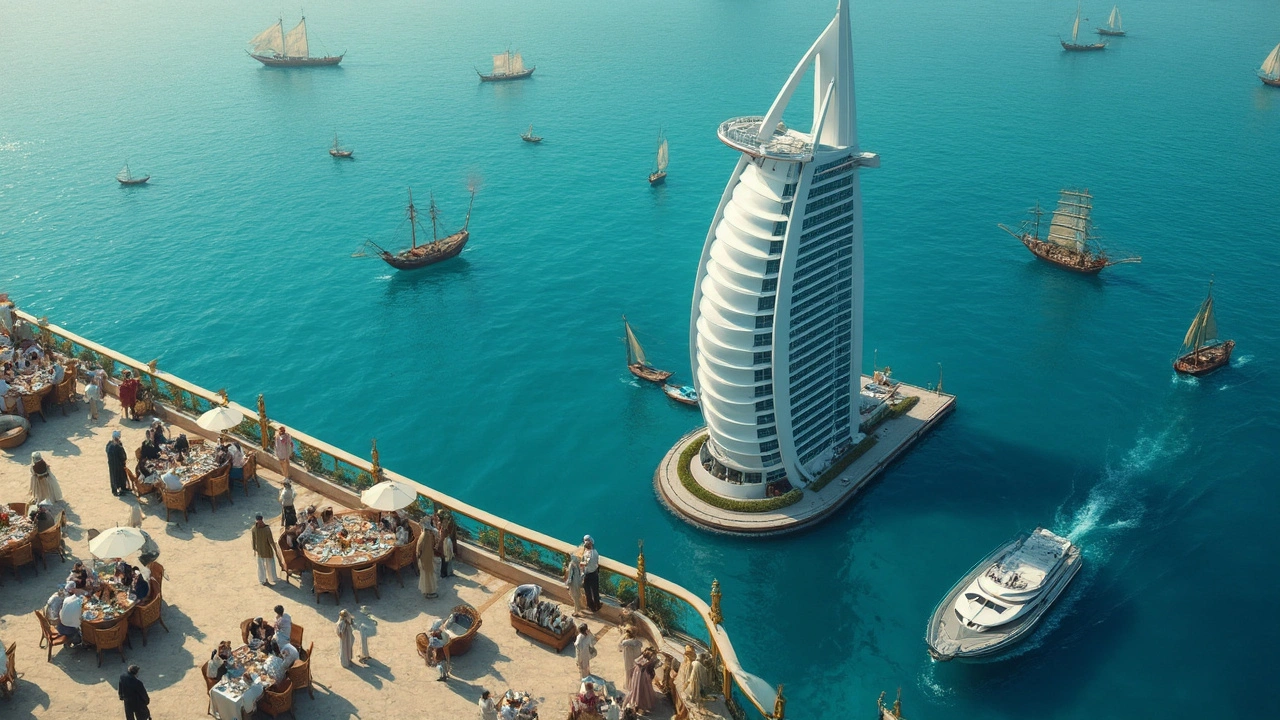
Tips for Dubai Residents: Making the Most of Burj Al Arab
Thinking Burj Al Arab is just for tourists with deep pockets? Not quite. Residents can enjoy plenty of perks—and a bit of smart planning helps. For starters, restaurants inside often run Emirati-special menus and events, especially during Ramadan, UAE National Day, or Dubai Food Festival. Check out their resident packages, which sometimes include a meal, beach access, or spa treatments at rates far better than walk-in pricing. This is especially true off-season, during the warmer summer months when foot traffic drops and hotels want to keep locals coming back.
For families, afternoon tea is surprisingly kid-friendly, and some promotions let little ones under a certain age eat free. If you’re celebrating—think birthdays, anniversaries, graduations—the staff are known to add thoughtful extras (personalized cakes, flowers, even a hand-delivered gift). For professional networking, many local business groups book private suites and lounges for meetings or launch parties, as the privacy and view make a solid impression.
- Photo tip: To snap that iconic shot, walk along Umm Suqeim Beach just before sunset—the view is incredible, especially in winter when the light’s soft.
- Book ahead—restaurants and spa slots go fast, especially during Dubai’s peak event weeks (like Art Dubai or Expo City showcases).
- Watch for seasonal pop-ups—last year, the helipad hosted an epic yoga session at sunrise, open just for UAE residents.
Don’t sleep on social media—giveaways and invites often go out on the hotel’s Instagram. Plus, Dubai’s concierge community is tight-knit: if you want a special experience, sometimes all it takes is a quick chat at your building’s reception or with a friend who works in hospitality. Word-of-mouth goes a long way here. Many Dubai residents have found their way into exclusive events thanks to a well-timed phone call or introduction.
If luxury’s your thing, and you want to connect with Dubai’s legacy while living in a city racing towards tomorrow, it’s hard to find a better spot than Burj Al Arab. It's luxury with roots, as familiar as a cup of gahwa but every bit as ambitious as Dubai’s next skyscraper.


